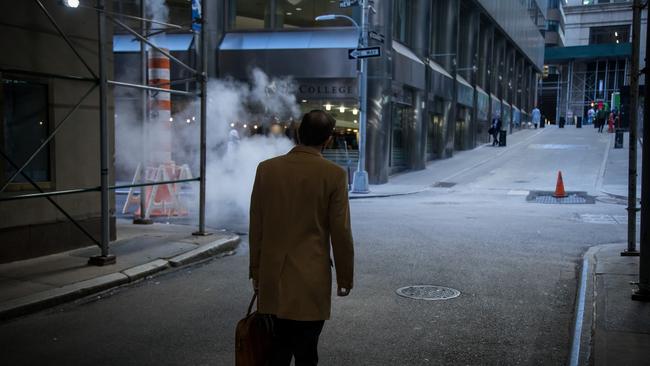Cheer the fear: Gloomy long-term forecasts are folly

They predict ongoing inflation, geopolitical rancour and profligate government spending will render a lost decade of stagnant returns, necessitating radical portfolio changes. Codswallop.
Far-future forecasts are folly – but they provide crucial sentiment signals about the here-and-now. Gloomy lost decade talk commonly perks around market bottoms, making today’s groaning counterintuitively bullish.
Lost decade doomers extrapolate current problems, arguing they ensure the far future is a wasteland of flat or terrible returns – some new normal. But new normal thinking isn’t new. It typically surfaces near market bottoms, after downturns crush sentiment.
Take 2020. The Covid-19 pandemic supposedly forever changed life and markets for the worse … before a bull market roared. Or early 2009. Proclamations of a low-return new normal blared amid US mortgage meltdowns, tanking commodities and Aussie banks slashing dividends. Yet from March 2009’s low through 2019, the ASX 200 rose 236.5 per cent. World stocks soared 283.8 per cent. Some lost decade!
Now, once again, proponents ignore John Templeton’s sage counsel – “the four most expensive words in the English language are ‘this time it’s different’,” – citing a cocktail of concerns. How can markets overcome nosebleed inflation, central banks’ tightening and government debt deluges? Most see interest rates soaring, sapping equity demand.
But markets and economies are inherently cyclical – and adaptive. Moreover, lost decade trumpeters ignore history. In the 1980s and 1990s, US 10-year Treasurys averaged 10.6 per cent and 6.7 per cent. Yet US stocks annualised 17.5 per cent and 18.2 per cent returns, respectively. Australian yields were even higher, yet your stocks annualised 17.8 per cent and 10.6 per cent. The Pessimism of Disbelief – the recurrent phenomenon I detailed in August – makes people forget.
Is a flat decade possible? Sure! The next century could be flat as the Hay Plains! But investing isn’t about possibilities – it is about probabilities. In assessing a lost decade’s probability, consider the evidence: Using America’s S&P 500 for its long data history, price returns were flat – below 15 per cent cumulative returns in USD – in just 18 per cent of rolling 10-year periods since 1925 – and negative in just 12 per cent.
Returns topped 200 per cent more often. Most flat or down stretches clustered around the Great Depression and World War II. From 1936 to 1948, nearly 60 per cent of rolling 10-year periods were flat.
But, price returns ignore dividends. Since 1925, S&P 500 total returns – price movement plus dividends – were flat or negative in only 7 per cent of rolling 10-year stretches. Dividends cut flat-to-down Depression periods in half! The 1970s occurrences mostly vanish outside 1973 – 1974’s bear market depths.
Even rare flat decades aren’t truly flat or L-shaped. After 1929 and the 1932 plunge, US stocks soared 324 per cent in price terms through 1937. World stocks’ supposed 2000 – 2009 lost decade was flat because one bear market started in 2000 and another bottomed in 2009. In between, a five-year bull market raged.
And, crucially, no one predicted a flat decade in 2000 – most foresaw tech-rich America leading a shimmering new economy, not a bleak new normal. Meanwhile, some deemed Australia’s economy too stodgy to keep pace – a fate the weakening Aussie supposedly foretold, Yet from 2000 through 2009, US stocks sank 37.4 per cent while the ASX 200 jumped 134.7 per cent. Global new normal fears arrived strongly in 2009. So did an 11-year long bull market.
Like any asset, stocks move on supply and demand. Far-future predictions typically ignore supply, the more crucial long-term driver. IPOs, bankruptcies, buybacks, mergers – these supply forces hinge on regulatory shifts, future sentiment and other factors unforecastable far in advance, one reason stocks weigh businesses’ outlooks over the coming roughly 3-30 months. Anything beyond is too murky. Hence the next decade’s course is unknowable – but history shows the journey won’t be flat. Opportunities will abound.
Bear markets end in Ws or Vs – not Ls – usually returning quickly to prior highs.
Again using US stocks for their longest history, the median time for new bull markets to surpass pre-bear market highs is 9.8 months. Yes, individual recoveries vary widely. Yes, perhaps this bear market isn’t done. But when US stocks have pierced -25 per cent from bull market peaks in price terms – which happened in September – returns were positive a year later 6 of 9 times. The down periods: 1929, 1937 and 2008. Now looks nothing like those.
Lost decade cries evidence where sentiment is now – not where stocks will be soon, let alone 10 years out. Pervasive gloom merely lowers the bar for the positive surprises that fuel new bull markets. Cheer the fear.





Do you buy the bounce? World stocks and the ASX have climbed since October’s start, but many doubters foresee a suffocating swirl of headwinds hampering markets not only in the fourth quarter and in 2023, but throughout the 2020s.